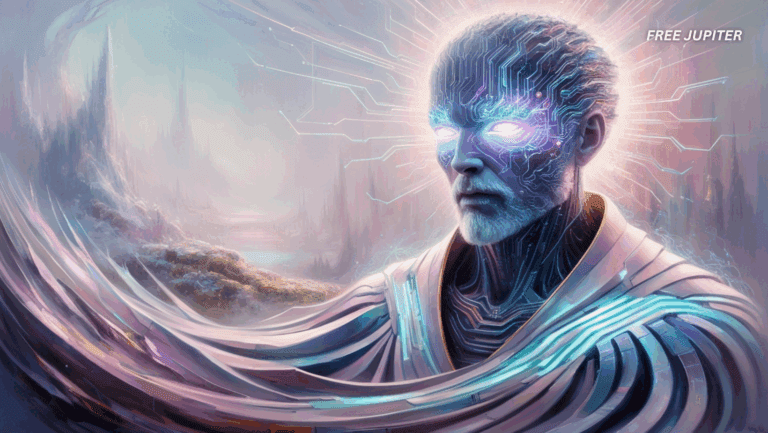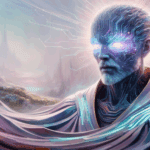Friendly Note: FreeJupiter.com shares general info for curious minds 🌟 Please fact-check all claims—and always check health matters with a professional 💙
In 2015, French paleoanthropologist Ludovic Slimak and his team were digging at Grotte Mandrin, a limestone cave tucked into the Rhône Valley of southern France. They had been working there since the late 1990s, patiently sifting through layers of dirt and stone in search of traces of ancient humans. After nearly 20 years of effort, they stumbled on something extraordinary: fragments of a Neanderthal jawbone.
At first glance, it was another valuable—but not shocking discovery. Neanderthal remains have been found across Europe before. But this wasn’t just any fossil. Over the next few years, as Slimak and his colleagues uncovered additional teeth and bone fragments, a picture began to form. This individual was not just another Neanderthal. He was part of the very last wave of his kind.
Slimak nicknamed him Thorin, after Tolkien’s dwarven king—the last of his line. The symbolism was fitting. Thorin the Neanderthal lived about 42,000 years ago, right on the cusp of his species’ disappearance from the Earth. And his DNA would soon reveal a story that could change our entire understanding of Neanderthals and their extinction.
Who Were the Neanderthals?
Before diving deeper into Thorin’s story, it helps to step back. Who exactly were the Neanderthals, and why are scientists so fascinated by them?
Neanderthals (scientific name Homo neanderthalensis) were a close cousin of modern humans. They evolved in Europe and parts of western Asia, living there for hundreds of thousands of years before Homo sapiens—our species—migrated out of Africa and began spreading across the globe.
Far from being the brutish cavemen of outdated stereotypes, Neanderthals were intelligent, adaptable, and resourceful. Evidence shows they used fire, hunted in coordinated groups, and crafted stone tools sophisticated for their time. They even buried their dead, and some archaeologists believe they may have created symbolic art.
Neanderthals thrived in the harsh Ice Age climates of Europe for over 350,000 years—an incredible stretch of time compared to how long Homo sapiens have been around so far. But by about 40,000 years ago, they had vanished. Only fragments of their DNA survive today, carried within modern humans who interbred with them at certain points in history.
Why they disappeared has long been one of the greatest puzzles in human history. And that’s where Thorin enters the story.
Read more: The Fascinating Reason Why Human Faces Don’t Look Like Neanderthals’
Thorin: The Last of His Kind
The Neanderthal fragments Slimak’s team found at Grotte Mandrin belonged to an individual who lived near the end of the species’ timeline. But what set him apart was not just when he lived, but how.
To learn more, Slimak had Thorin’s DNA sequenced. The results, published in Cell Genomics, were striking. Thorin’s genetic code showed that his group had been living in near-total isolation for around 50,000 years.
In scientific terms, the DNA revealed “high genetic homozygosity.” In plain language, that means Thorin’s group had been reproducing within the same small community for countless generations. Over time, this led to inbreeding—a sign that they were cut off from other Neanderthal populations.
Even more remarkable, Thorin’s DNA showed no evidence of interbreeding with modern humans, despite the fact that Homo sapiens were already moving into Europe during his lifetime. Thorin’s people lived just a short distance—about a two-week walk—from other Neanderthal groups, yet they remained completely separate.
This wasn’t just a genetic oddity. It suggested that Thorin’s community had been a cultural and biological island for tens of thousands of years, resisting contact with both neighbors and newcomers.
An Extinction Reconsidered
For decades, scientists have debated why Neanderthals went extinct while humans survived. Theories have ranged from climate change to competition with Homo sapiens, to the possibility that Neanderthals simply merged into human populations through interbreeding.
Thorin’s DNA adds a new twist. If some groups of Neanderthals, like Thorin’s, were already isolated for tens of thousands of years, then extinction may not have been a sudden event. Instead, it may have been a slow unraveling, with populations cut off from one another until they could no longer sustain themselves.
Slimak himself put it starkly: “Everything must be rewritten about the greatest extinction in humanity.” He questioned how it was possible for populations to live in such close proximity—sometimes just a few days’ journey apart—yet never share genes. To him, Thorin’s DNA suggests that cultural or social barriers may have been just as important as environmental ones.
This reframes the story of Neanderthals’ disappearance. Instead of imagining a dramatic clash where modern humans simply outcompeted them, we may need to picture a slower decline—one shaped by isolation, fragmentation, and the inability to adapt through exchange.
Tools as Clues
Interestingly, Slimak suspected something unusual about the Rhône Valley Neanderthals long before the DNA results confirmed it. Decades earlier, he had studied the stone tools found in the region.
He noticed that the tools looked different from those in nearby areas. While other Neanderthal groups had adopted new styles and techniques, the tools in the Rhône Valley seemed stuck in an earlier tradition. To Slimak, this was a sign of cultural isolation.
The DNA evidence from Thorin lined up perfectly with this theory. His group wasn’t just genetically isolated—they were culturally conservative as well, holding onto older ways of life even as innovations spread elsewhere.
It’s almost as if Thorin’s people were a time capsule, living out their days largely untouched by the changes happening around them.
Read more: Archaeologists Uncover A 125,000-Year-Old Factory Hidden Inside Of a Hill
What Makes This Discovery Important?
At first glance, Thorin’s DNA might seem like a niche detail about a single Neanderthal. But the implications ripple out much further.
- It reshapes our timeline of extinction. Neanderthals may not have disappeared all at once, but rather in fragmented groups, some persisting in isolation until the end.
- It shows how fragile survival can be. Thorin’s people lived side by side with others yet never exchanged genes. Whether by geography, culture, or choice, their isolation weakened them.
- It highlights the importance of connection. Modern humans survived not only because of adaptability but also because of our ability to share ideas, trade, and mix with different groups. Thorin’s fate is a cautionary tale about what happens when communities close themselves off for too long.
- It challenges the “sapiens superiority” narrative. For years, the story of Neanderthals has been framed as a tale of our species triumphing over theirs. But Thorin’s DNA suggests the reality was more complex—sometimes extinction is about chance, geography, and isolation, not simply who was “better.”
Lessons from the Last Neanderthal
There’s something strangely haunting about Thorin’s story. Here was a group that survived for tens of thousands of years in their own world, maintaining traditions, raising children, and navigating their landscapes—all without realizing they were the last of their kind.
Today, the discovery forces us to reflect on the thin line between survival and extinction. Species don’t always vanish because of a dramatic catastrophe. Sometimes, it’s the slow drip of isolation, small populations, and missed opportunities for connection.
For humans living in a hyper-connected world, this lesson feels oddly relevant. Our strength as a species has always been our ability to share ideas, adapt, and build networks. Thorin’s story reminds us that closing ourselves off—genetically, culturally, or socially—can be the first step toward decline.
Read more: The Incredible Case Of The Only Known Individual With Parents From Two Different Species
A Hobbit’s Wisdom, Revisited
When Slimak named the Neanderthal after Thorin Oakenshield, it was more than a playful nod to Tolkien. It was a recognition of the symbolic weight of the discovery. In the story, Thorin Oakenshield is the last of his royal line, a reminder of a world that has passed. Thorin the Neanderthal represents something similar—the last echoes of a lineage that once thrived but could not survive.
And just like in The Hobbit, where a journey reveals more than the characters expected, Slimak’s decades of digging unearthed something that changed the story of humanity.
As Tolkien’s Thorin might have said: you may not always find what you’re looking for, but sometimes what you find is even more important.










